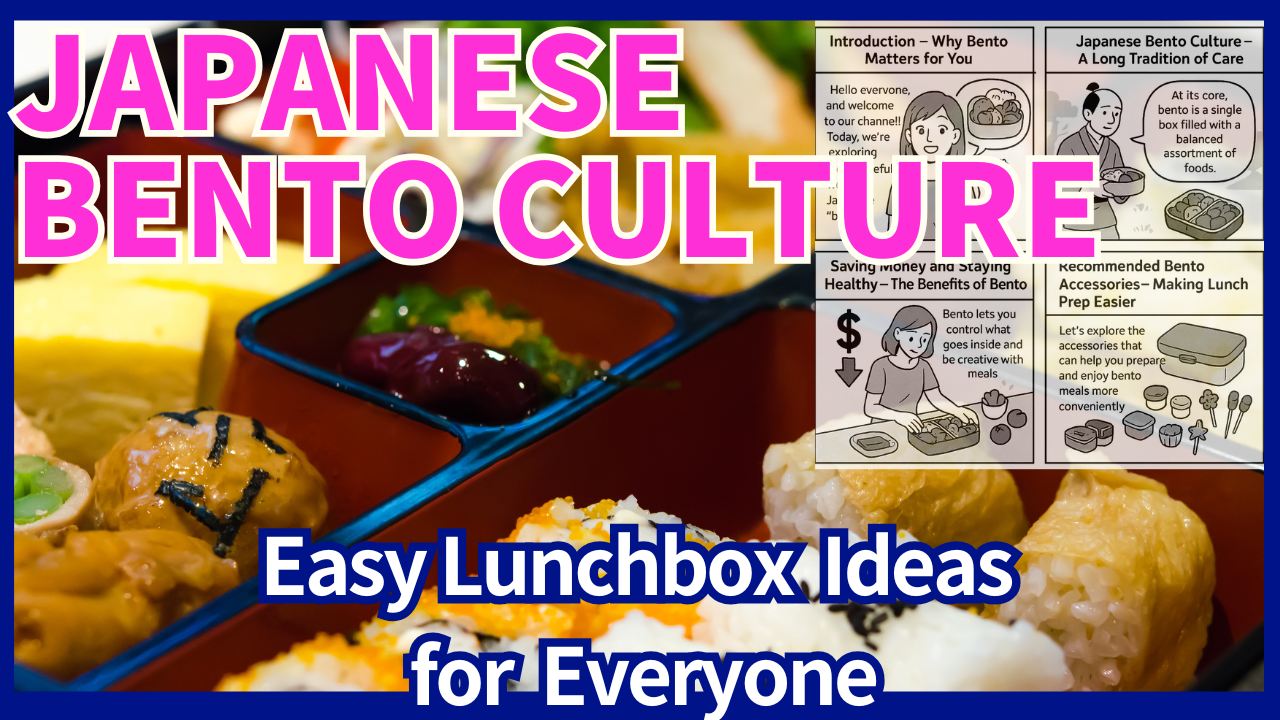Introduction – Why Bento Matters for You
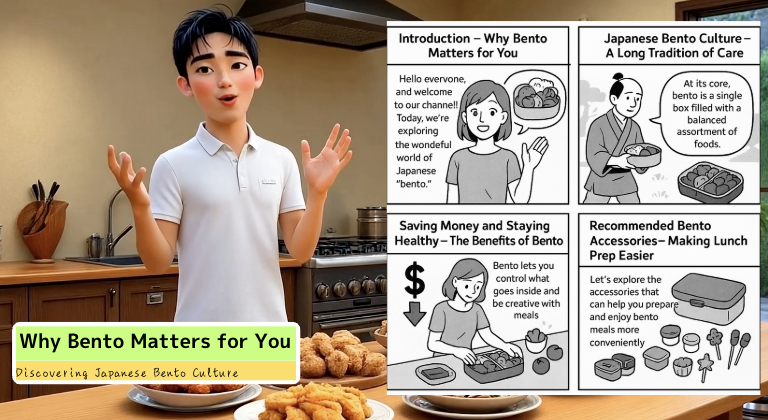
Hello everyone, and welcome to our channel! Today, we’re exploring the wonderful world of Japanese “bento.” I
f you’ve never heard of bento, think of it as a beautifully arranged lunchbox that’s both budget-friendly and packed with nutrients.
While bento originally comes from Japan, it can be enjoyed and appreciated by people all around the globe. It’s a fun, creative, and money-saving way to have a wholesome meal.
In this video, I’ll share the history and appeal of bento culture, discuss how it can help you cut costs and eat healthier, and then introduce a variety of handy bento accessories.
Towards the end, I’ll also recommend places in Tokyo where you can easily buy these items if you happen to visit. Let’s get started!
Japanese Bento Culture – A Long Tradition of Care
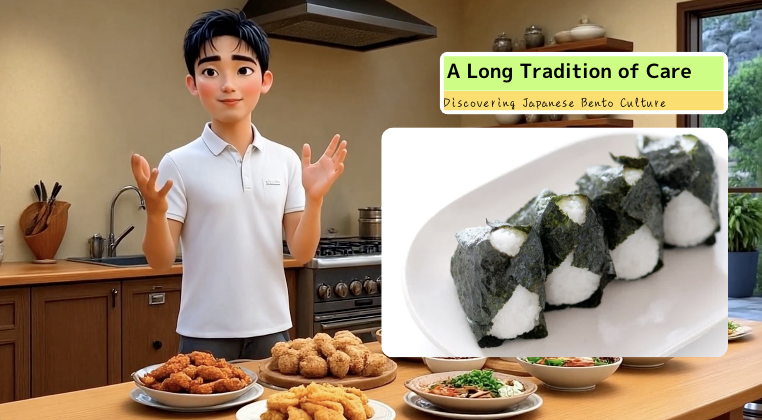
First, let’s take a look at where bento culture comes from. Centuries ago, during Japan’s feudal era, people carried dried rice or small rice balls for meals on the go.
The term “bento” itself is thought to have become widespread in the 16th century, partly influenced by historical figures like Oda Nobunaga, who served simple meals called “bento” to large groups of guests at his castle.
Over time, bento grew more popular—becoming a common sight in the Edo period for outings and theater visits, eventually leading to the iconic “makunouchi bento.”
Later, train travelers began enjoying “ekiben,” a convenient way to eat delicious meals while on the move.
At its core, bento is a single box filled with a balanced assortment of foods, often including rice, a main dish, vegetables, and fruit.
These days, “bento” is recognized worldwide by people who love how easy it is to organize different dishes in one container, all while keeping a neat and colorful appearance.
In Japan, bento-making is frequently a family tradition, with parents preparing these meals for their children or spouses as a gesture of care and love.
For kids, opening their lunchbox to discover a bright and creative setup can be a highlight of the day, making bento an experience that goes beyond simply eating.
Saving Money and Staying Healthy – The Benefits of Bento

Bento isn’t just about culture or cute appearances. It also has practical advantages for those looking to save money and maintain a healthy lifestyle.
Let’s talk about costs first. In many places, buying lunch outside or ordering delivery can easily exceed ten dollars per meal, which adds up even more if you’re paying for multiple people. By making your own bento at home, you can cut costs considerably.
Cooking larger portions for dinner and turning leftovers into bento lunches is a common and effective strategy. Over weeks and months, these smaller daily savings can grow into a significant amount.
In terms of health, bento allows you to decide exactly what goes inside.
You can incorporate more fruits and vegetables, avoid fried foods if you wish, and control your portion sizes easily.
Because bento relies on a compartmentalized layout, it also helps you monitor different food groups—like protein, carbs, and vegetables—at a glance. For children or even adults who want to explore new flavors, bite-sized servings in a colorful arrangement can make trying new foods more engaging.
Overall, bento’s combination of cost-effectiveness and nutrition offers a compelling alternative to typical lunch options.
Recommended Bento Accessories – Making Lunch Prep Easier
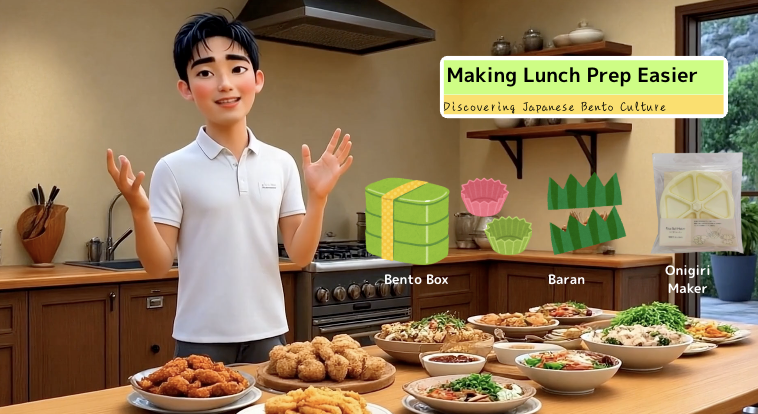
Let’s explore the accessories that can help you prepare and enjoy bento meals more conveniently. Rather than just listing them, I’d like to give you a sense of how these items are typically used.
A quality bento box is essential. Look for one with compartments or enough space to separate different foods so that flavors don’t blend.
One-tier boxes with a tight seal are a great starting point, though two-tier boxes can be handy if you like to keep rice and side dishes completely apart. Many newer bento boxes are microwave- and dishwasher-safe, making them perfect for busy schedules.
Silicone cups, or reusable foil-like cups, are extremely useful for dividing small portions of sauces or side dishes. This separation keeps everything neat and also helps maintain distinct flavors.
Small sheets called “baran” can add a pop of color (often green) and act as a buffer between different foods. If you enjoy playful details, “picks”—tiny mini-forks in various shapes—can easily elevate the lunchbox, especially for children or anyone who loves a bit of fun.
When it comes to onigiri (rice balls), dedicated molds can create perfect triangles, circles, or even heart-shaped rice portions.
For additional decoration, small cutters work wonders on items like ham, cheese, or vegetables, stamping them into stars, flowers, or other shapes. And if you want to add faces or patterns to your food, “nori punches” are a clever way to cut seaweed into adorable expressions.
Condiments like soy sauce or dressings are best kept in small separate containers or bottles. This not only prevents soggy food but also lets each person season their meal however they like right before eating.
If you want to keep your bento fresh, especially in warm weather, an insulated lunch bag and a small ice pack can preserve its quality until midday.
And for those who prefer hot soups or stews, a thermal “soup jar” can keep your meal warm for hours, opening up even more variety for your lunches.
Where to Buy Bento Goods – Shop Recommendations in Tokyo
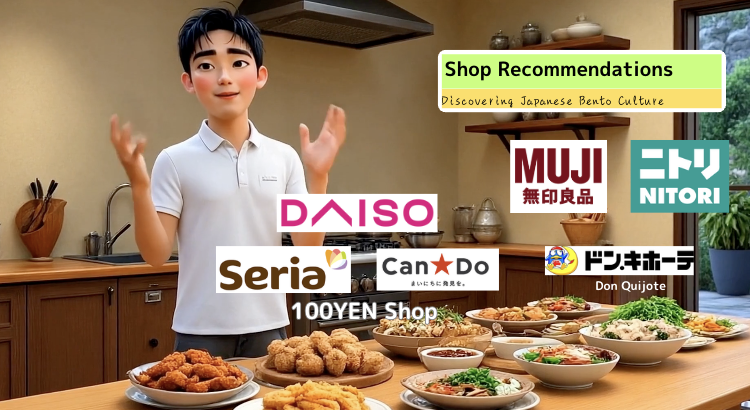
If you plan to visit Tokyo and want to find these bento items, there are plenty of stores worth checking out.
Daiso is a major 100-yen shop (about one U.S. dollar plus tax) where you can find everything from bento boxes to silicone cups and decorative picks at very low prices.
Similar 100-yen chains like Seria and Can Do also carry a wide assortment of bento goods. Browsing different branches can be a fun treasure hunt, as each location has its unique lineup.
If you prefer minimalistic designs, Muji (also known as MUJI) offers simple, modern lunchboxes and kitchen tools in calm, neutral tones.
Another handy spot is Nitori, known for affordable furniture and household goods; they stock various lunchboxes, insulated bags, and more, all designed for convenience. For an all-in-one shopping adventure, Don Quijote—often nicknamed “Donki”—is a discount chain carrying everything under the sun, including an array of bento supplies.
Even if you can’t visit Tokyo soon, many of these items are sold online through retailers like Amazon. Still, there’s something special about seeing these products firsthand while you’re in Japan.
Conclusion – Start Your Own Bento Journey
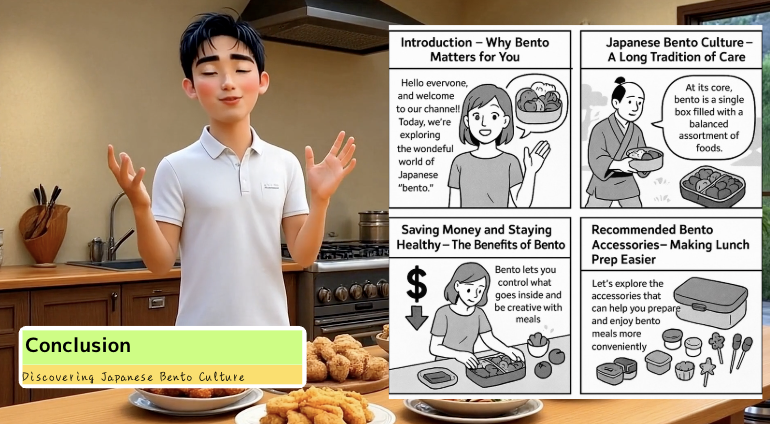
We’ve taken a look at the origins of Japanese bento culture, the benefits it offers for saving money and staying healthy, and a variety of accessories that simplify lunchtime prep. If you’re new to bento, don’t worry about making elaborate “character bento” right away.
Even a simple combination of a sandwich, fruit, and vegetables can be neatly arranged in a box. Over time, you can experiment with more colorful ideas and new gadgets. The main goal is to make lunch enjoyable and manageable, without overwhelming yourself.
Thank you for watching, and I hope this video inspires you to add a little bit of Japanese bento culture into your daily routine.
In our next video, we’ll be showcasing a few simple yet visually appealing bento recipes, so make sure to subscribe and hit the like button if this was helpful. Until next time, take care and have fun exploring the world of bento!
